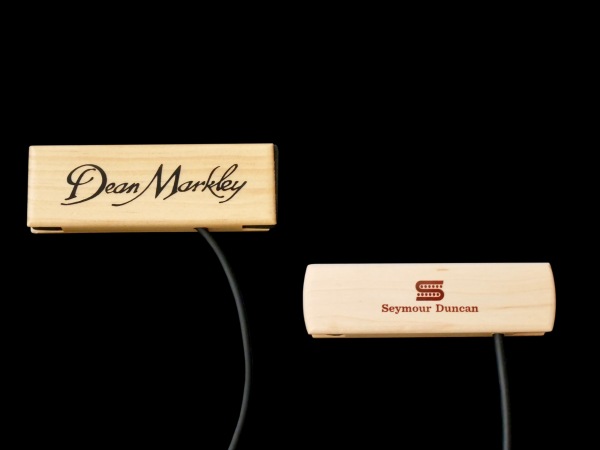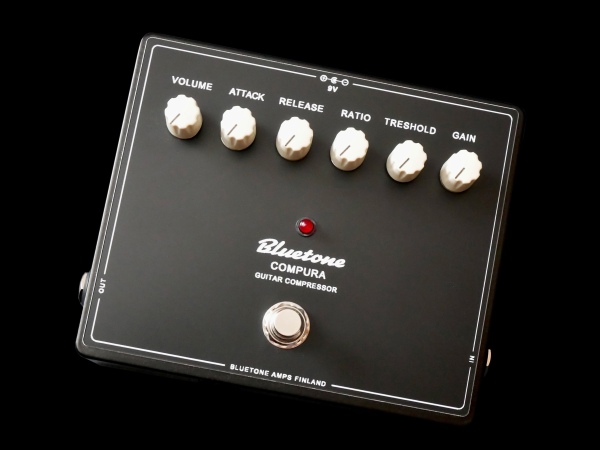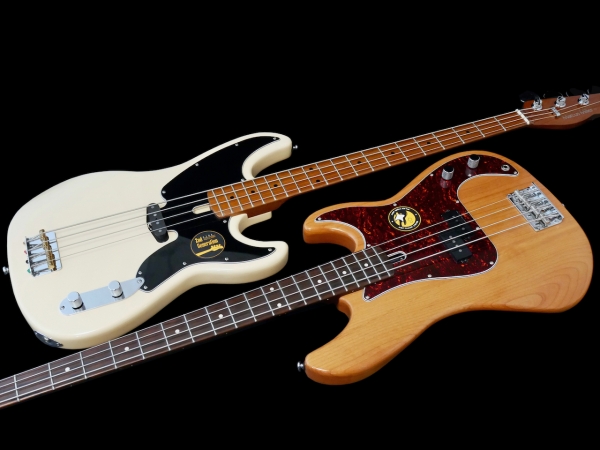Magneettisien ääniaukolle menevien mikrofonien testi löytyy TÄÄLTÄ.
Bluetone Compura Guitar Compressor – Demo song – demobiisi

Lisää infoa/More information: Bluetone Compura
• Clean rhythm and lead guitars – Fender ’62 Telecaster Custom Reissue
• Clean and overdriven rhythm guitars – Fender ’57 Stratocaster Reissue
• Amp used – Bluetone Black Prince Reverb
• Pedals used – Bluetone Compura, Mad Professor Simble OD
• Mic used – Shure SM7B
• Preamp used – Cranborne Audio Camden EC2
• Interface used – Universal Audio Volt 2
Purple Haze (Jimi Hendrix cover)
• Lead guitars – Jackson JS32 Dinky
• Rhythm guitars – Squier Sonic Stratocaster
• Effects – Vox V845 wah-wah, Boss DS-1 distortion
• Amp – Bluetone Black Prince Reverb
• Mic – Shure 545SD
• Preamp – Cranborne Camden EC2
• Interface – Universal Audio Volt 2
”Sleep Walk” + Jackson JS32 Dinky
• Joe Satriani levytti biisistä hyvän version vuonna 2002. Se on juuri Satrianin versio, josta sain inspiraatiota äänittää oman coverin.
• Kitara: Jackson JS32 Dinky
• Pedaalit: Mad Professor Simble OD ja EHX Memory Toy
• Vahvistin: Bluetone Black Prince Reverb
****
• Guitar: Jackson JS32 Dinky
• Pedals: Mad Professor Simble OD & Electro-Harmonix Memory Toy
• Amp: Bluetone Black Prince Reverb
• Microphone: Shure SM7B
• Interface: Universal Audio Volt 2
Tulossa Rockway-blogiin: Kaksi magneetista mikkiä akustiselle
• komppikitarat: Seymour Duncan Woody SC (vasen kanava), Dean Markley ProMag Plus (oikea kanava) • melodia: Dean Markley ensimmäinen läpisoitto, Seymour Duncan toinen läpisoitto
• kitara: Takamine N-20 (jumbo seetrikannella)
• etuvahvistin: Cranborne Audio Camden EC2
Sire Marcus Miller D5 & P5 Alder-4 – testi tulossa Rockway-blogiin
• Sire Marcus Miller D5 Alder-4
• Sire Marcus Miller P5 Alder-4
****
The bass parts were played through a Bluetone Bass 200 combo, and recorded with a Shure SM7B microphone plugged into a Cranborne Audio Camden EC2 preamp.
****
The guitar tracks were recorded with a Shure SM7B microphone plugged into a Cranborne Audio Camden EC2 preamp.
• Guitar, stereo left: Gibson Melody Maker SG through an EHX Nano Small Stone into a Bluetone Shadows Jr combo
• Guitar, stereo right: Fender (Japan) 50s Stratocaster into a Bluetone Black Prince Reverb combo
Tulossa Rockway-blogiin: Kolme epätavallista Ohana-ukulelea
• Concert-kokoisen VKC-70:n inspiraationa on toiminut Harmonyn Roy Smeck Vita -nimikkomalli.
• Ohana BKT-70G yhdistää tenori-pituisen kaulan ja baritoni-uken kaikukopan.
****
Komppiosuudet on soitettu oikean käden peukalolla ja etusormella. Stereokuvassa SKB-35 tulee vasemmalta, BKT-70G on keskellä ja VKC-70 kuuluu oikealta. Soitin melodiaosuudet 3 mm paksulla huopaplektralla.
****
Kaikki ukuleleraidat on äänitetty Shure 545SD -mikrofonilla ja Cranborne Audio Camden EC2 -etuvahvistimen kautta.
Review: Squier Sonic Mustang SS
From the late 1970s on, Fender’s student-oriented models began to find their way into the hands of musicians from the Punk, New Wave, Grunge and Alternative Rock genres.
The reasons for this can be found both in the musicians’ budgets, as well as in the guitars’ image. The average guitarist wanted to play with ”familiar and safe” models, and in Fender’s case, these were the Telecaster and Stratocaster.
At the end of the 1970s, Fender’s so-called student instruments, that were very popular in the 1950s and 60s, could be found very inexpensively second-hand. With the Mustang, Duo-Sonic or Musicmaster, the young New Wave musician got genuine Fender quality at a very affordable price, and since these instruments were not – at least at the time – collector’s items, modifying the guitars to suit the needs of the ”new music” was no problem.
Many guitarists of the new genres – e.g. the Talking Heads’ David Byrne, Sonic Youth’s Thurston Moore and Nirvana’s Kurt Cobain – added more powerful pickups to their Duo-Sonic or Mustang to better suit their sound. This resulted in distinctive guitars that certainly weren’t ”your dad’s Country guitar”.


Last year, Fender’s subsidiary Squier Guitars changed the name of its most affordable line from Affinity to Sonic, and at the same time expanded the range of instruments in the series.
There are now two different Mustang guitars in the Sonic series, of which the Mustang HH offers two humbucker pickups, while the Mustang SS, like the original Fender, comes equipped with two single coils. Both models are offered in two different colour options as standard, which in the case of the Mustang SS model are sunburst and Torino Red. The Mustang HH comes in light blue and pink. The Sonic Bronco bass is now available in three different colors – white, red and black.

A vintage enthusiast would be the first to point out that, according to Fender’s original terminology, the Squier Sonic Mustang SS (street price approx. 180-200 €) is not a Mustang, but a Duo-Sonic, as the model has a fixed bridge and a three-position pickup selector. I would bet that Fender and Squier have decided that the name Mustang is simply cooler and better known than Duo-Sonic, which is why all their short-scale models with the same body shape are currently called Mustangs, despite the streamlined electronics and bridge.

However, the familiar basic recipe still applies:
The Squier Mustang SS is an electric guitar with a 24-inch scale. The bolt-on maple neck has a maple fingerboard and well-installed 22 vintage-style frets.

The offset body of the Mustang SS is a slab number with rounded edges, but without any chamfers.

The thick single-layer plastic pickguard is typical for Sonic series instruments. Mustang’s two single-coil pickups – with closed black plastic covers – and a three-position mic selector are installed onto the pickguard.
The Squier guitar’s volume and tone controls, as well as the output jack, are placed on a chrome-plated metal plate.

The Mustang’s modern sealed tuners work well, as does the Sonic model’s fixed bridge with six separate saddles.

Straight out of the shipping carton, the test guitar is almost ready to play – only the action and intonation had to be fine-tuned. The guitar doesn’t suffer from sharp fret ends sticking, or other ”cheap guitar” problems. The workmanship seems fine.
The new Squier Sonic Mustang SS weighs a bit more than the original edition from the 1960s, but in light of the Mustang’s very affordable price, this is to be expected and perfectly okay.
The Squier Sonic Mustang SS model has a decent 009 set of strings installed at the factory, which is probably a good choice for the guitar’s target group (children and young people). The playing feel is very effortless and light, and the Mustang chimes very nicely. I played all the guitar tracks in the demo video with Squier’s factory-installed strings.

However, the feel of the 009 string set on a guitar with a 61 cm scale is too loose for me, which is why I changed over to the same 010-052 strings that I use in all my electric guitars. With these strings, the Sonic Mustang SS immediately has a firmer playing feel, which is not very different from, for example, a Gibson SG.
Although the scale of the Sonic Mustang is much shorter than that of Telecasters or Strats, there is a definite dose of ”Fender-ism” in the sound of the guitar, thanks to the single-coil pickups. Because the Mustang’s pickups are placed in somewhat different places relative to the scale than, for example, in the Telecaster, the model always displays its own recognisable sound. The Mustang’s tone rings like a bell, but is never as biting as, for example, the output of a Stratocaster.





